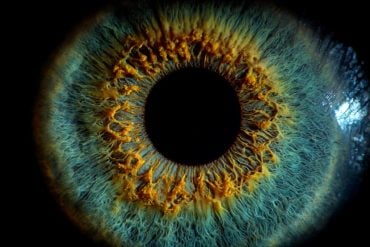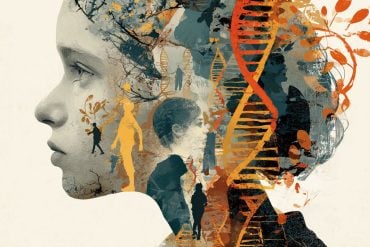Summary: A large-scale international study has revealed that autism diagnosed in early childhood is genetically and developmentally distinct from autism diagnosed later in life. Researchers analyzed data from over 45,000 autistic individuals and found that early-diagnosed children often show social and behavioral difficulties from a very young age.
In contrast, later-diagnosed individuals tend to experience challenges that emerge in adolescence, alongside higher risks of depression and related conditions. The findings suggest that autism is not a single unified condition, but a spectrum of developmental pathways influenced by different genetic and social factors.
Key Facts
- Distinct Pathways: Early and late autism diagnoses follow different developmental and genetic trajectories.
- Genetic Overlap: Later-diagnosed autism shares more genetic similarities with ADHD and depression than with early-diagnosed autism.
- Support Matters: Lack of early support may contribute to higher risks of mental health struggles in later-diagnosed individuals.
Source: University of Cambridge
An international study led by researchers at the University of Cambridge has discovered that autism diagnosed in early childhood has a different genetic and developmental profile to autism diagnosed from late childhood onwards.
The scientists say that the findings challenge the long-held assumption that autism is a single condition with a unified underlying cause.
Published today in Nature, the study analysed behavioural data across childhood and adolescence from the UK and Australia, and genetic data from over 45,000 autistic individuals across several large cohorts in Europe and the US.
Scientists from Cambridge’s Department of Psychiatry found that children diagnosed as autistic earlier in life (typically before six years old) were more likely to show behavioural difficulties from early childhood, such as problems with social interaction.
However, those diagnosed with autism later on in life (in late childhood or beyond) were more likely to experience social and behavioural difficulties during adolescence. They also had an increased likelihood of mental health conditions such as depression.
The team then linked the genetic data to the age at diagnosis among autistic people. They found that the underlying genetic profiles differed between those diagnosed with autism earlier and later in life, with only a modest overlap.
In fact, the average genetic profile of later-diagnosed autism is closer to that of ADHD, as well as to mental health conditions like depression and PTSD, than it is to autism diagnosed in early childhood.
The study’s authors point out that a lack of support in early childhood will also play a role in increased risk of mental health issues in the later-diagnosed group, for example by being more vulnerable to bullying pre-diagnosis.
Nevertheless, scientists say that the stronger genetic overlap between later-diagnosed autism and certain psychiatric disorders suggests there may be some genetic factors that partly increase the risk of mental health conditions among those diagnosed with autism later in life.
“We found that, on average, individuals diagnosed with autism earlier and later in life follow different developmental pathways, and surprisingly have different underlying genetic profiles,” said lead author Xinhe Zhang from the University of Cambridge.
“Our findings suggest that the timing of autism diagnosis reflects more than just differences in access to healthcare or awareness, important as these are. However, it is important to note that these are average differences on a gradient, so earlier and later diagnosed autism are not valid diagnostic terms.”
The study looked at “polygenic” factors: sets of thousands of genetic variants that can collectively shape particular traits. The team found that commonly heritable polygenic factors explain around 11% of the variation in age at autism diagnosis.
“The term ‘autism’ likely describes multiple conditions,” said senior author Dr Varun Warrier from Cambridge’s Department of Psychiatry. “For the first time, we have found that earlier and later diagnosed autism have different underlying biological and developmental profiles.”
“An important next step will be to understand the complex interaction between genetics and social factors that lead to poorer mental health outcomes among later-diagnosed autistic individuals.”
This study has implications for how autism is conceptualised, studied, and supported, say the research team. It suggests that genetic and developmental variation contributes to when and how autistic traits manifest, and why some individuals are diagnosed only later in life.
“Some of the genetic influences predispose people to show autism traits from a very young age that may be more easily identified, leading to an earlier diagnosis,” added Warrier.
“For others, genetic influences may alter which autism features emerge and when. Some of these children may have features that are not picked up by parents or caregivers until they cause significant distress in late childhood or adolescence.”
“Understanding how the features of autism emerge not just in early childhood but later in childhood and adolescence could help us recognise, diagnose, and support autistic people of all ages.”
Funding:
This study was supported by the Wellcome Trust, the UKRI, Horizon Europe (R2D2-MH), and the Simons Foundation for Autism Research Initiative. It was conducted in association with the NIHR CLAHRC for Cambridgeshire and Peterborough NHS Foundation Trust, and the NIHR Cambridge Biomedical Research Centre.
Key Questions Answered:
A: Autism diagnosed early in childhood shows different genetic and developmental patterns compared to autism diagnosed later.
A: Early-diagnosed children show difficulties in social interaction from a young age, while later-diagnosed individuals often develop issues in adolescence and face higher risks of depression.
A: Later-diagnosed autism shares greater genetic overlap with ADHD, depression, and PTSD than with early-diagnosed autism, suggesting distinct biological pathways.
About this Autism and genetics research news
Author: Communications team
Source: University of Cambridge
Contact: Communications team – University of Cambridge
Image: The image is credited to Neuroscience News
Original Research: Open access.
“Polygenic and developmental profiles of autism differ by age at diagnosis” by Varun Warrier et al. Nature
Abstract
Polygenic and developmental profiles of autism differ by age at diagnosis
Although autism has historically been conceptualized as a condition that emerges in early childhood, many autistic people are diagnosed later in life.
It is unknown whether earlier- and later-diagnosed autism have different developmental trajectories and genetic profiles.
Using longitudinal data from four independent birth cohorts, we demonstrate that two different socioemotional and behavioural trajectories are associated with age at diagnosis.
In independent cohorts of autistic individuals, common genetic variants account for approximately 11% of the variance in age at autism diagnosis, similar to the contribution of individual sociodemographic and clinical factors, which typically explain less than 15% of this variance.
We further demonstrate that the polygenic architecture of autism can be broken down into two modestly genetically correlated (rg = 0.38, s.e. = 0.07) autism polygenic factors.
One of these factors is associated with earlier autism diagnosis and lower social and communication abilities in early childhood, but is only moderately genetically correlated with attention deficit–hyperactivity disorder (ADHD) and mental-health conditions.
Conversely, the second factor is associated with later autism diagnosis and increased socioemotional and behavioural difficulties in adolescence, and has moderate to high positive genetic correlations with ADHD and mental-health conditions.
These findings indicate that earlier- and later-diagnosed autism have different developmental trajectories and genetic profiles.
Our findings have important implications for how we conceptualize autism and provide a model to explain some of the diversity found in autism.







